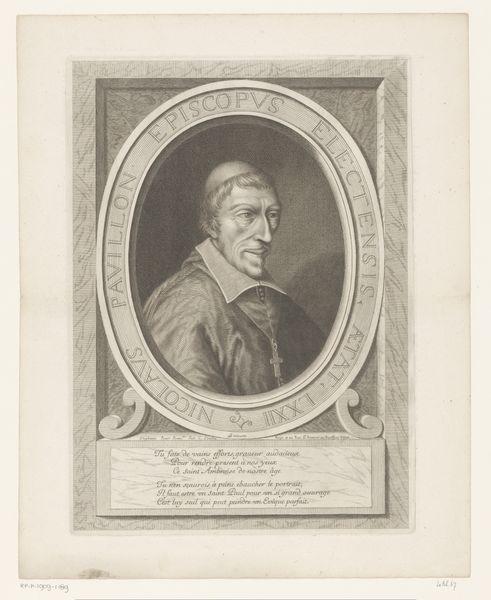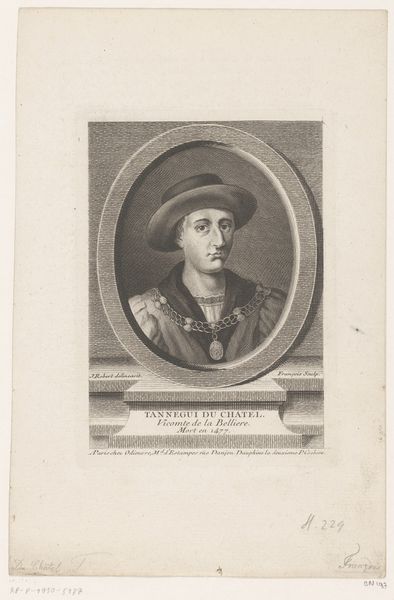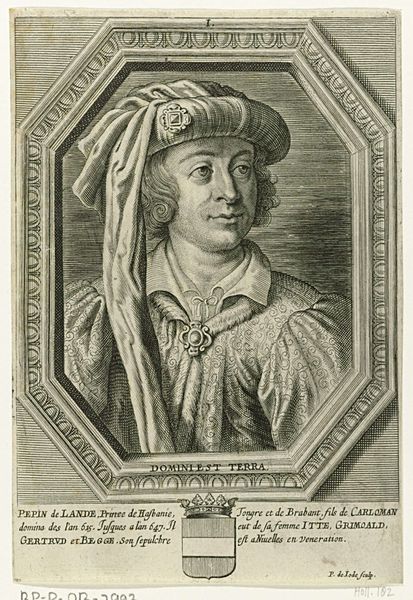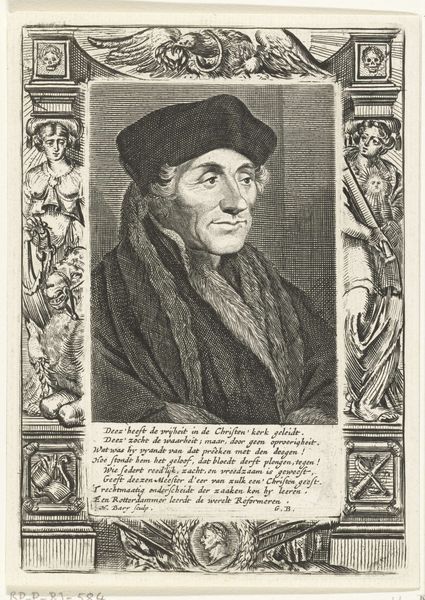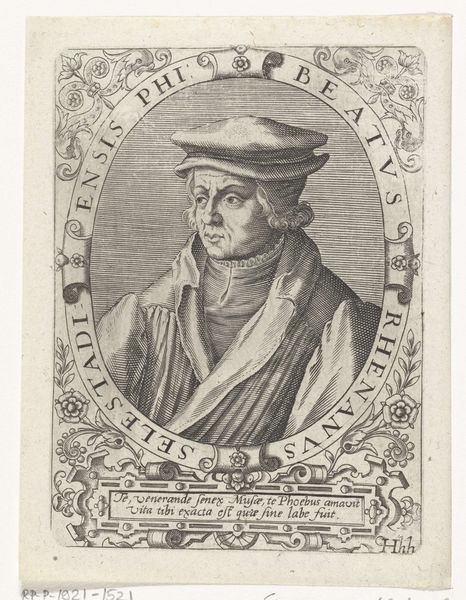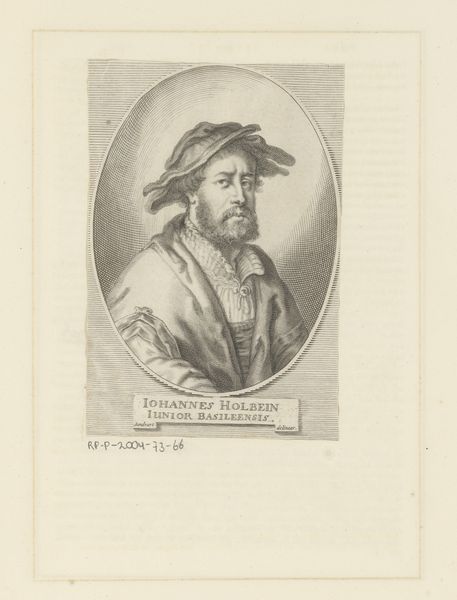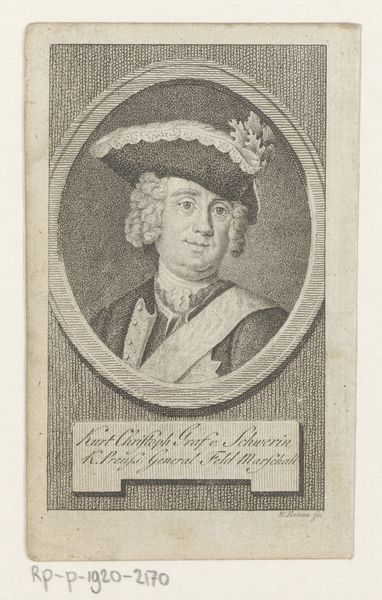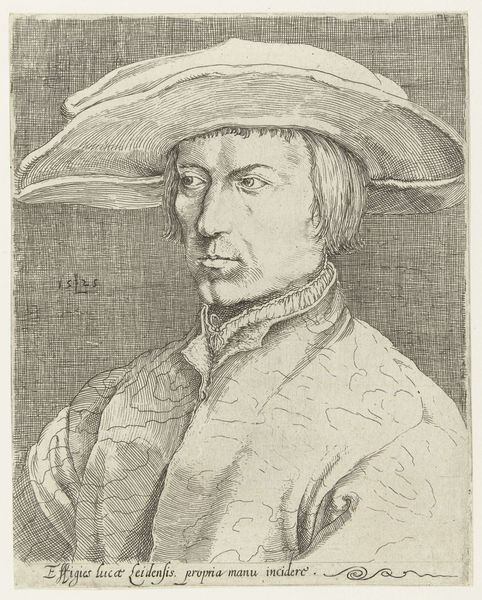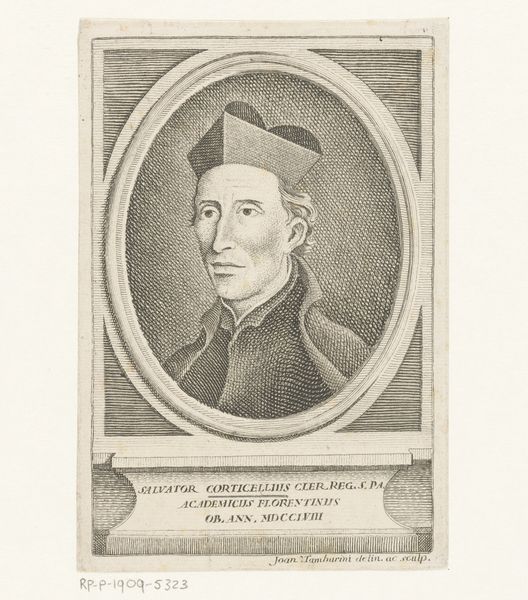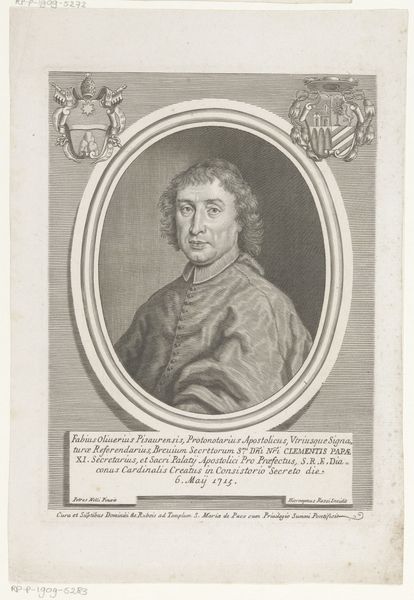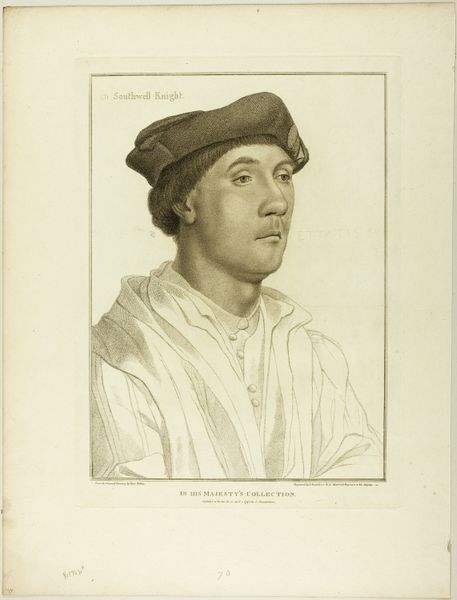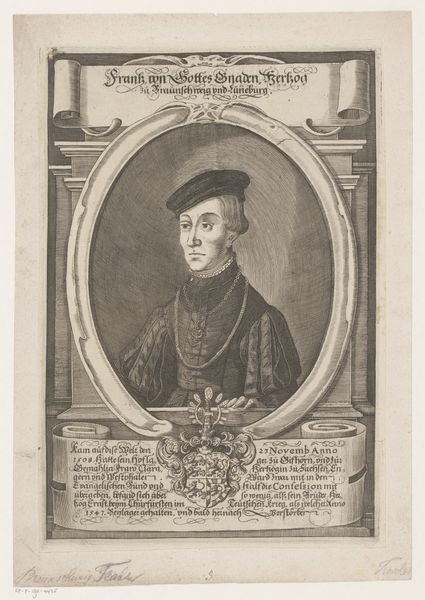
print, engraving
#
portrait
#
baroque
# print
#
old engraving style
#
history-painting
#
engraving
Dimensions: height 158 mm, width 114 mm
Copyright: Rijks Museum: Open Domain
Philips Galle created this portrait of Allard van Amsterdam sometime before 1612 using engraving techniques. Notice how the artist uses line to construct form, meticulously creating the textures of fabric and skin through varied densities and directions. The engraving’s stark contrast emphasizes the subject’s face, drawing our eye to his composed expression. Consider how Galle uses these formal elements to convey Allard’s intellectual stature. The inscription below the portrait identifies Allard as both a theologian and a philologist, framing him as a figure of scholarly importance. The detailed rendering of his garments, particularly the soft folds of his cloak and cap, suggests a man of thoughtful contemplation. The image, therefore, operates on several levels: it is both a record of a man's likeness and a statement about his intellectual and social standing. This interplay between representation and meaning invites us to consider how portraits of the time functioned within a broader cultural context, reinforcing social hierarchies and projecting ideals.
Comments
No comments
Be the first to comment and join the conversation on the ultimate creative platform.
